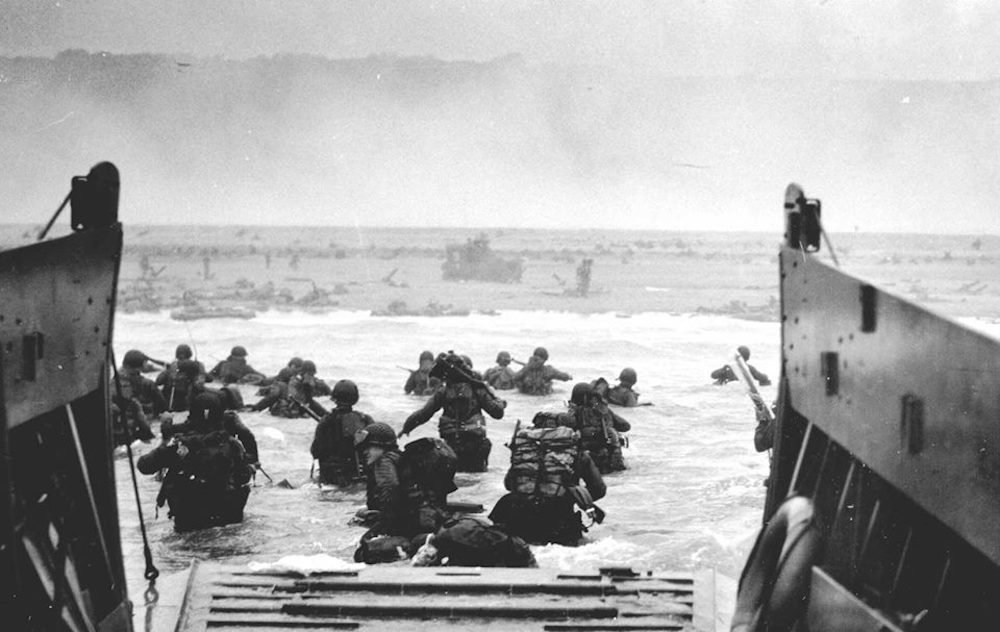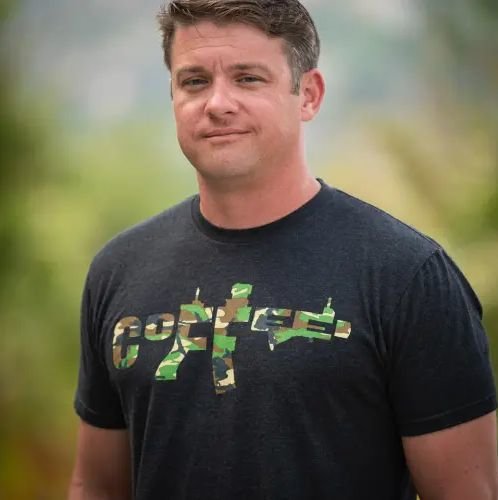
In 2019, US soldiers with the 75th Ranger Regiment scale the cliffs of Normandy like the “Greatest Generation” did during Operation Overlord. The soldiers from the 75th were among 1,300 US service members and 950 troops from Europe and Canada to mark the anniversary. US Army photo by Markus Rauchenberger.
Sunday marks the 77th anniversary of the D-Day landings in Normandy, France. Operation Overlord was unprecedented in American warfare. Its complexity, risk, scale, and integration of partner capabilities had never been experienced before. Yet, in many ways, the invasion set the tone for how the US military fights to this day. Concepts informing leadership and tactics that veterans of the Global War on Terror recognize today were innovations back then and, in many cases, were born out of necessity.
Normandy required rapid developments in small-unit leadership, logistics, and intelligence — all while leveraging the Allies’ strengths and capabilities.
“The Allies did have weaknesses, but the overall planning and might of the alliance in the air, sea, land, and logistics won the day,” Donald Vandergriff, a retired Army Armor officer and military historian of maverick leadership, told Coffee or Die Magazine. “It was an alliance like no other in history. It took a coalition of nations to defeat Germany.”

The might Vandergriff references consisted of at least 150,000 troops from the US and Allied nations forcing their way into France in a combined airborne and amphibious operation. Supporting these soldiers were about 13,000 planes and 5,000 ships, making up the largest amphibious operation of all time.
“Overlord required two years of planning. The landing tables were 700 pages long. Air operations [had] to harmonize with ground operations and ship bombardment tables. It all had to be written and war-gamed and rehearsed,” Vandergriff said. In the decades that followed Normandy, the US would replicate similar methodology in successful operations in Korea, Desert Storm in Iraq in 1991, Afghanistan, and the 2003 invasion of Iraq.
At the strategic level, the invasion of Normandy utilized an unprecedented insertion of paratroopers behind enemy lines to disrupt German reinforcements and turn attention away from the beaches. “The Germans innovated it, yet the Allies mastered it, with the largest jump in the history of warfare,” Vandergriff said.
At the tactical and operational levels, this airborne drop presented a considerable risk. The battle of Sicily had seen a similar yet smaller attempt to combine airborne and amphibious operations and resulted in considerable losses by the Allies, many by friendly fire when the Allied naval landing force mistook their own aircraft for German planes.
“The need to route Allied transport aircraft away from friendly seaborne invasion forces in Overlord was a direct result of tragic friendly fire as the paratroopers were flown into their drop zones directly over the invasion fleet at Sicily,” David Naslanic, a retired Army paratrooper and master parachutist, told Coffee or Die Magazine. “Overlord was a culmination of some tough lessons learned throughout the war.”

At Normandy, airborne units knew that if they didn’t disrupt German units located away from the beach, the entire operation would be in jeopardy. Previous airborne operations, like the one in Sicily, had taught commanders that the operation would be chaotic and unpredictable, requiring adaptive small-unit leadership — a trait still present in the military today.
“Allied leadership saw to it that every man knew ‘the Plan’ and knew how to execute the commander’s intent,” Naslanic said. “Every US Army paratrooper would recognize this in 2021 along with the concept of Little Groups of Paratroopers, or LGOPs.”
To this day, the LGOP concept is emphasized down to the most junior level. If a paratrooper becomes separated from his platoon, company, or even division, he is taught to find other Americans, band together, and execute the overall mission.
“It was drilled into us in the 82nd that we were never to move off the [drop zone] alone,” Naslanic explained. “We were to find two to three other paratroopers, regardless of unit, and move off smartly to an assembly area or an objective. I’m confident that the veterans of Operation Overlord would recognize exactly what we were doing.”
Innovation and tactical flexibility weren’t the only two hallmarks carried forward from Normandy. The invasion also set the tone for intelligence and logistics. Overlord featured one of the most effective deception activities, along with unprecedented logistical innovations.
Under a companion deception mission, Operation Fortitude, Allied partners were tasked with convincing Hitler that the landing would be at Pas-de-Calais rather than at Normandy. Otherwise, the German Panzer reserves would be free to launch an immediate counterattack within 24 hours of the initial landing — the time frame Allied leadership calculated they needed to put enough armor ashore to handle a German armored attack.
“They used fake tanks, planes, trucks, and jeeps (blowups), fake radio communications, and even a commander of the fake Army, George S. Patton. Today, every operation, at every level, should include a deception plan alongside your operations plan,” Vandergriff said.

Ultimately, Operation Fortitude deceived the Nazis to the point where they held Panzer reserves in place long enough for the Allies to gain their foothold. The deception operation had rendered the prospect of a counterattack of German tanks moot.
Once ashore, the Allied troops still needed to be supplied. Much like in today’s operations, the troops at Normandy did not want for anything — thanks to innovation and the military’s dedication to ensuring those in the field had everything they needed at their disposal.
“Logistics won the day. From fuel line across the channel to the Mulberry harbors that existed until enough ‘real’ ports could be taken, the GIs and Allies [were] never short of anything, from ammo to food,” Vandergriff told Coffee or Die.
With all the pieces in place, history tells us that the Allied force ashore in Normandy continually gained momentum, eventually culminating in the liberation of Paris, and later the ultimate defeat of the Nazi war machine.
For more than 77 years, the US military has ensured that its forces have the best equipment and flexibility on the battlefield while leveraging intelligence and alliances to win the day. Yet, without the bloody proving ground that was Operation Overlord, none of this might have been possible.
“[The] Air Corps, Army, Navy, Coast Guard, and multinational [forces] all having to synchronize their activities to achieve success: It really was the model for contemporary combat operations in which the US has always sought to fight alongside partners,” National Guard Lt. Col. Doug Livermore, a Navy senior intelligence officer, told Coffee or Die Magazine.
Read Next:

James Webb served as a US Marine infantryman from 2005 to 2010, completing a combat tour in Iraq. He’s worked as a freelance writer and photojournalist covering US troops in Afghanistan, and Webb spent more than two years in the US Senate as a military legislative assistant and as the personal representative of a member on the US Senate Foreign Relations Committee.
BRCC and Bad Moon Print Press team up for an exclusive, limited-edition T-shirt design!
BRCC partners with Team Room Design for an exclusive T-shirt release!
Thirty Seconds Out has partnered with BRCC for an exclusive shirt design invoking the God of Winter.
Lucas O'Hara of Grizzly Forge has teamed up with BRCC for a badass, exclusive Shirt Club T-shirt design featuring his most popular knife and tiomahawk.
Coffee or Die sits down with one of the graphic designers behind Black Rifle Coffee's signature look and vibe.
Biden will award the Medal of Honor to a Vietnam War Army helicopter pilot who risked his life to save a reconnaissance team from almost certain death.
Ever wonder how much Jack Mandaville would f*ck sh*t up if he went back in time? The American Revolution didn't even see him coming.
A nearly 200-year-old West Point time capsule that at first appeared to yield little more than dust contains hidden treasure, the US Military Academy said.












